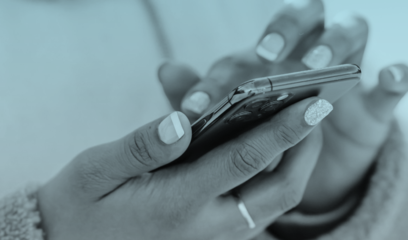I stood unsteadily on the side of the mountain, desperately clutching a thick chain that had been anchored deep into the rock next to me. My vision narrowed. My breath became shallow. My legs started to shake violently. I found myself unable to move. Several feet away, the trail that I was on abruptly ended, and a sheer cliff met the ground 1000 feet below.
I was supposed to be having fun. My husband and I were on vacation in Zion National Park and had decided to hike to the top of Angels Landing. Several weeks before, I had seen pictures of this harrowing trail steeply ascending a narrow mountain ridge—and admittedly, I had been nervous. Very nervous. But as an avid hiker, I wasn’t about to turn down the opportunity to tackle this breathtaking trail.
I just thought that the “breathtaking” part would be figurative, not literal.
This experience was new to me. I had never before been paralyzed by fear, and I wasn’t quite sure what to do. I scooted to the side of the trail and started to review my options. Certainly, I could turn around, head back down to the trailhead, and face major disappointment. Or I could push forward and face—in my mind, at least—near certain death.
Creating Value For Quality Of Life
When I first heard that the theme for the 2014 Service Design conference was “creating value for quality of life,” I immediately recalled this mountain experience and the fear that had so tightly gripped both my body and mind. For me, “quality of life” means living without fear. Or, rather, recognizing fear—and then getting over it.
I’m very fortunate. I don’t often fear for my health, my safety, or my life. In fact, most of the fears I face are self-induced. It’s me who puts limits on what I can achieve. It’s me who worries what others will think. It’s me who whispers, “No… That won’t work.” It’s me who envisions myself falling off a cliff in southern Utah.
But fear isn’t just personal. Fear has a tight grip on too many of today’s businesses. It has crept insidiously into our organizations, seducing managers into making safe decisions. We even celebrate this fear with a well-known adage: “Nobody every got fired for hiring [insert traditional management consulting firm of your choice].”
Specifically, organizations harbor an irrational fear of design. We’re all hard wired to fear the unknown—and human-centered design runs counter to the engrained business practices that most organizations are so comfortable with. But in today’s business world, being comfortable is a precursor to being a dinosaur.
As experience designers, we need to make a concerted effort to change the fear-based behaviors and language that organizations embrace so tightly. We need to introduce the word “dare” into the conversation. (I’ve picked up this word from my friends at the experience design firm Doberman, who seem to use it in nearly every conversation.) What do you (or your clients) dare to dream? What do you (or your clients) dare to create? Who do you (or your clients) dare to be?
How To Dare
Back on Angels Landing, I somehow mustered up enough courage to stand up, put one foot in front of the other, and get myself to the top of the mountain. From there, the massive vista of the Zion valley opened up before me as I basked in both the sunlight and an overwhelming sense of accomplishment. In the face of fear, we all need to:
- Forget about the worst-case scenario. In reality, several people have died on the Angels Landing trail—but thankfully I didn’t know that at the time! Of course, some worst-case business scenarios—like losing a client, getting fired, or going out of business—can be truly devastating. But our modern business world is incredibly forgiving, and what’s viewed as a failure today is quickly chocked up to lessons learned that bolster tomorrow’s success.
- Ask for help. I honestly don’t think I could have made it to the top of the mountain without my husband in front of me, suggesting footholds, offering words of encouragement, and even holding my hand at times. In the business word, we often fear that we’ll be perceived as incapable, unknowledgeable, or weak if we ask for help. But customer experience and service design aren’t individual sports. We need a team—in fact, we need everyone within an organization—to help us if we want to reach our objectives. Asking for help should be a natural and constant part of this organizational dynamic.
- Celebrate acts of daring. After our hike, we stopped by the Zion visitor’s center and I purchased a refrigerator magnet: a replica of the U.S. Geological Survey marker that sits at the peak of Angels Landing, 5785 above sea level. Several times I day I walk by it and am reminded of how powerful I can be—if I just let go of my fears. What do you do in your organization to reward acts of daring, both large and small? What do you do to remind your colleagues and employees of just how powerful they can be?
My fear of Angels Landing lifted completely as we started our descent. The trail was just as harrowing on the return, but I bounded down, taking pictures, chatting with fellow hikers, and admiring the sweeping views that I had missed on the way up. Getting over our fears—as people, as designers, as organizations—can and will improve the quality of our lives. Dare to do it!
***
This post originally appeared in my regular column in Touchpoint Journal, published by the Service Design Network.




